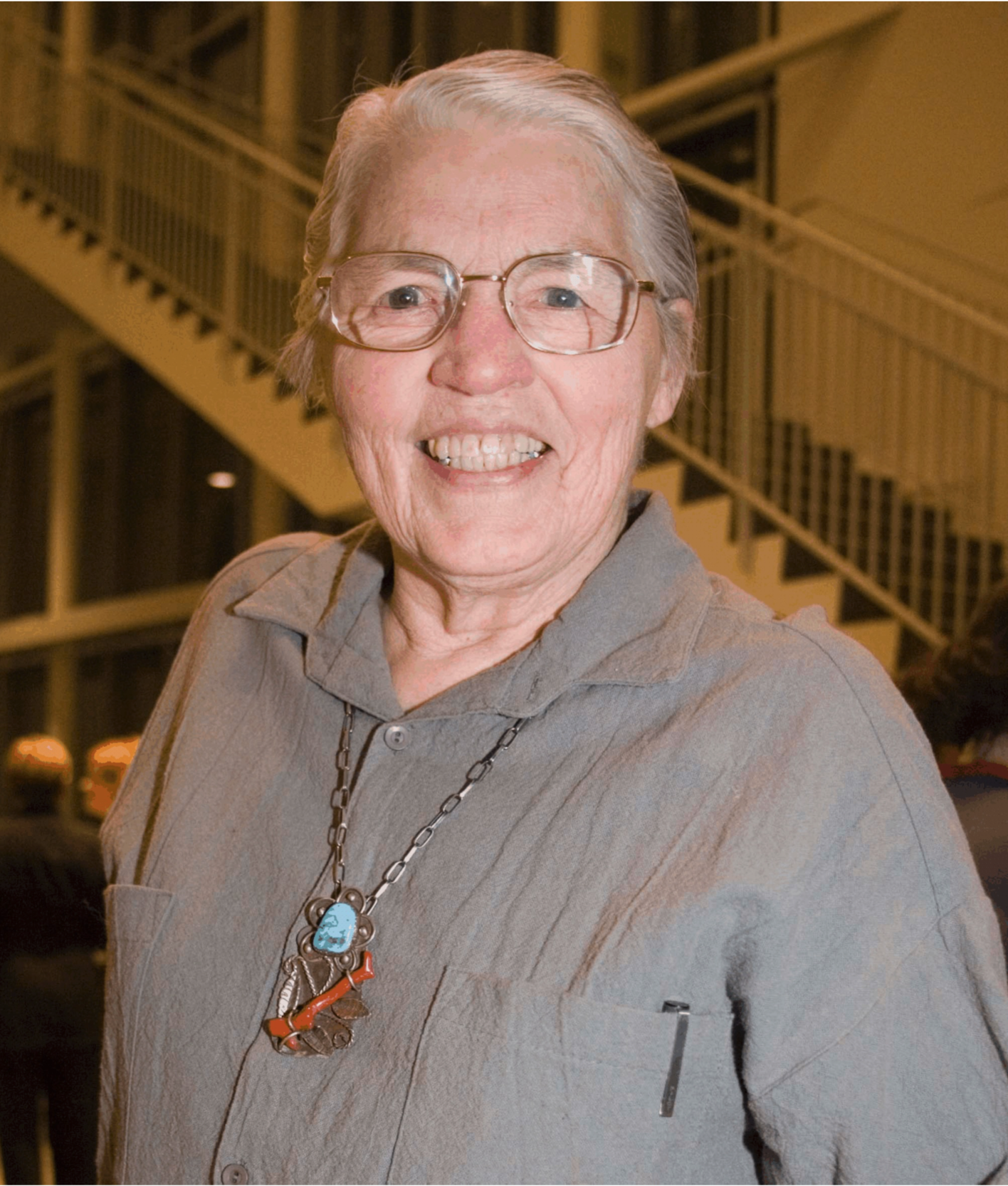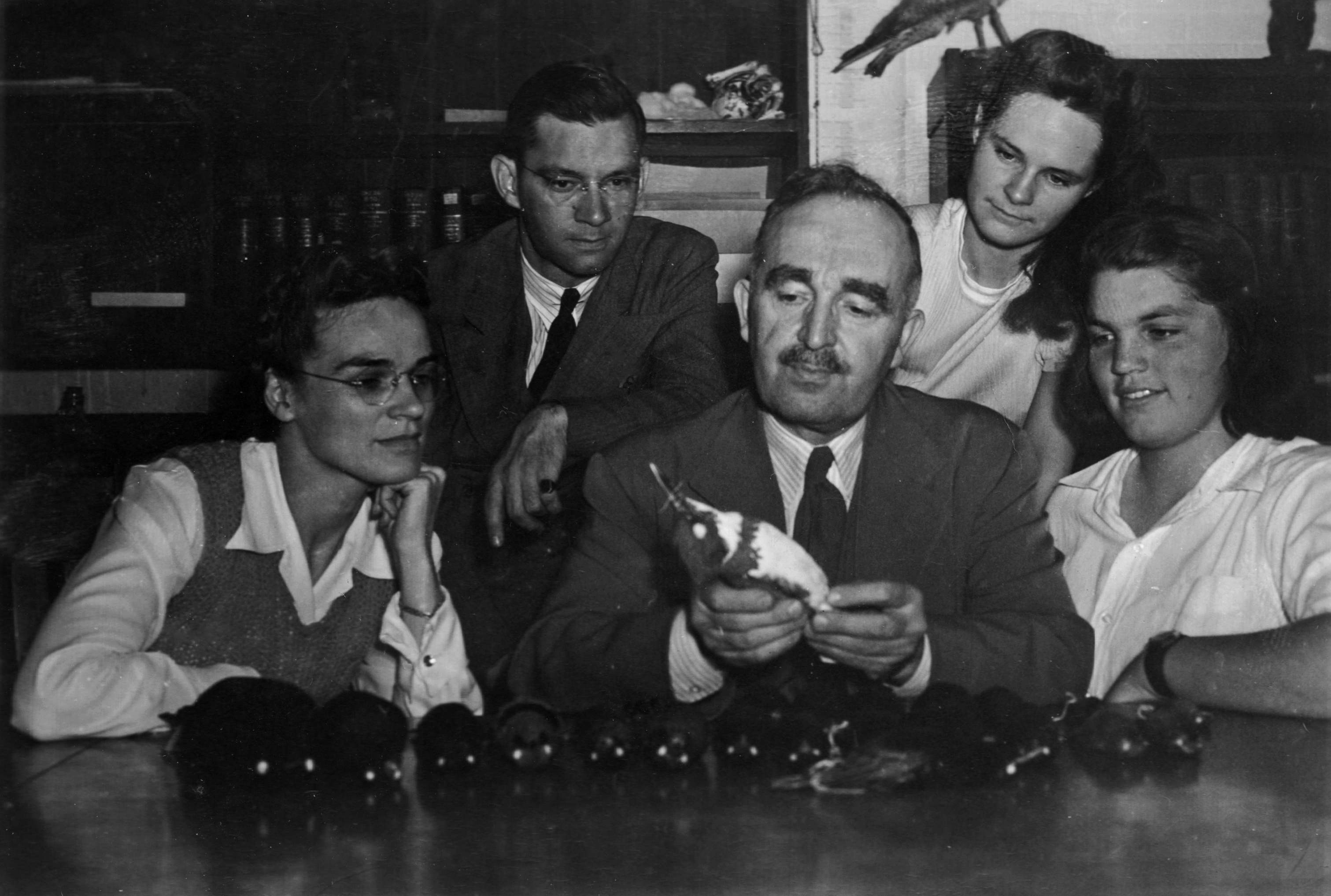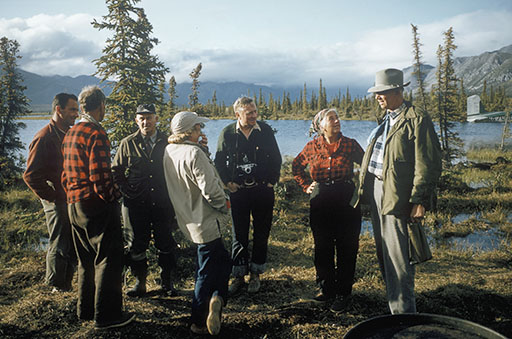CELEBRATING
THE HISTORY OF WOMEN IN ORNITHOLOGY
Until the 1970s, few women could have called themselves ‘professional’ ornithologists no matter how great their contribution to the study of birds. As I have documented earlier in this series of essays about the history of ornithology, women were most often (i) invisible, in the sense that we know only about their contributions but not who they were (see here), (ii) or working largely in the background for their husbands (see here), fathers [1], or employers (see here), (iii) or conducting research as at least equal partners with those men but too often given second-billing (see here), (iv) or studying birds as a hobby but even then rising to the top of their field (see here and here).

This week I am highlighting the work of one of the few women to be employed as a professional ornithologist before 1970: Brina Kessel. As a university professor conducting research on birds she achieved international renown for her research and her books about the birds of Alaska. Dr Kessel, who died in 2016, spent her entire academic career at the University of Alaska in Fairbanks and her contributions will be highlighted at the upcoming AOS meeting in June in Anchorage. Because her work is ‘contemporary’ it will be known to ornithologists who worked in the latter half of the 20th century, so I am going to highlight here some of her early influences and experiences that may be less well known.

Kessel was born in Ithaca, New York to graduate student parents who moved to Storrs, Connecticut, when she was quite young so that her father could take up faculty position—in English—at the university there. Her mother studied entomology at Cornell but both parents took ornithology classes from Arthur A. Allen. They were also naturalists who kindled Brina’s early interest in birds.
Brina first experienced alpine tundra on a family trip to the top of Mount Washington (New Hampshire) where she was bitten by the tundra bug, a chronic illness that I share with many of my friends. She once quipped that her preference for tundra habitats “must have been a mutant gene that I had” [2]. Gordon Orians thinks that we might have an evolved response to prefer certain savannah-like habitats, so Brina might have been right about her tundra-loving gene.
Brina returned to Ithaca to be an undergraduate at Cornell where she took part-time jobs on the Poultry Department and became acquainted with Arthur A. Allen and Paul Kellogg, occasionally helping them with their frog and bird song recordings. Many of the undergraduate men were away from school contributing to the war effort so Brina was not held back by the sort of misogyny that might have limited her opportunities for research as an undergrad.
She loved that work and decided to seek an advanced degree with Aldo Leopold at the University of Wisconsin in 1947. Leopold founded the study of wildlife management and was a leading American ecologist so she set her sites high. Brina had chosen wisely as she was very interested in the growing interest in conservation, biodiversity, and wilderness protection. Unfortunately, Leopold died from a heart attack while fighting a brush fire on his neighbour’s property a few months after Brina began her studies. As if that was not enough, the University of Wisconsin, in those days, would not allow women into their wildlife management program so Brina was unable to pursue a PhD there.

Frustrated on those two fronts, Brina returned to Cornell for her PhD, studying the behaviour and ecology of Starlings under Allen’s supervision. About 90 Starlings had been released in Central Park in New York and by 1950 the species had spread across the United Sates to the Rocky Mountains. They may already have numbered as many as 100 million but their breeding biology had never been studied in North America. Based on 7 years field study from 1945 to 1951 she completed her PhD in two years and immediately moved to Alaska.
Her first job at the University of Fairbanks was as lecturer but she quickly gained a faculty position and by 1967 was head of that department. Over the years she explored much of the state, particularly the arctic and alpine tundra regions that she loved so much
Soon after her faculty appointment, she put in a proposal to travel by boat down the Colville River studying the birds of that region with her grad school friend, Tom Cade. That river, however, flowed into the US Naval Petroleum Reserve on the north slope, and she was told that “You can not come up on to the Reserve because the Navy will not allow any woman on the Petfore Reserve unless they are married, and with their husband” [2]. Brina was sorely disappointed but was able to send a U of A freshman—George Schaller—in her stead. She liked Schaller’s interest in natural history and enthusiasm but had little inkling of his eventual success as conservationist and writer. Schaller later went with Kessel and the Muries on an expedition down the Sheenjek valley in 1956.

While she led many field expeditions herself, Brina also sent many others off into the Alaskan wilderness to survey the birds. She did, however, analyze the data and take a major role in writing up those studies for publication. Throughout her career she also did not hesitate to take on leadership roles, including a two-year stint as the 45th president of the American Ornithologists’ Union from 1992-94, only the second woman to serve in that capacity [3]. Despite, or perhaps because of, her frequent administrative roles, Brina realized that her field trips were “...where I’ve been most content and happy in my life. Out there just contemplating the tundra” [3].

SOURCES
- Albin E (1731-38) A natural history of birds. Illustrated with a hundred and one copper plates… Published by the Author, Eleazar Albin, and carefully colour’d by his Daughter and Self, from the Originals, drawn form the live Birds. London.
- Kessel B (1989) Birds of the Seward Peninsula, Alaska. Their Biogeography, Seasonality, and Natural History. Fairbanks: University of Alaska Press.
- Kessel B (1998) Habitat Characteristics of Some Passerine Birds in Western North American Taiga. Fairbanks: University of Alaska Press.
- Kessel B, Cade TJ (1958) Birds of the Colville River, northern Alaska. Biological Papers of the University of Alaska no. 2.
- Kessel B, Schaller GB (1960) Birds of the Upper Sheenjek Valley, northeastern Alaska. Biological Papers of the University of Alaska no. 4.
- Orians G, Heerwagen JH (1992) Evolved responses to landscapes. In: Barlow JH, Cosmides L, Tooby J (Eds), The Adapted Mind, Evolutionary Psychology and the Generation of Culture. Oxford: Oxford University Press.
Footnotes
- working for their…fathers: Eleazar Albin‘s daughter Elizabeth did many of the hand-coloured etchings in his 1731-38 book
- Kessel quotations: from interview with Roger Kaye, 22 January 2003, available here
- second woman AOU president: the first was Fran James from 1984-86
IMAGES: Kessel (top) from University of Alaska Friends of Ornithology Newsletter, May 2007; book covers from the internet; Kessel and Allen and Kessel (bottom) from University of Alaska Museum website (here); 1956 expedition from USFWS website.
Hi Bob. I’ve been reading some of your blog posts, and have enjoyed them all. I particularly like this one, particularly because of its current relevance (given upcoming celebration of Brina’s life at AOS meeting) and because I learned quite a bit about her! Thanks again for posting these (always informative and interesting) pieces….
Mike
From: History of Ornithology
Reply-To: History of Ornithology
Date: Monday, March 25, 2019 at 10:07 PM
To: Mike Webster
Subject: [New post] Contemplating the Tundra
Bob Montgomerie posted: ” CELEBRATING THE HISTORY OF WOMEN IN ORNITHOLOGY BY: Bob Montgomerie, Queen’s University | 25 March 2019 Until the 1970s, few women could have called themselves ‘professional’ ornithologists no matter how great their contribution to the study of b”
And, please note, Brina has a brother, Quinton. He is an emeritus prof in Physics at UConn, and lived just down Cod Fish Rd from me. His wife had, in their barn a full set of the “Living Bird” series when it was a book sized publication.
Oh, and it gets thicker. Tom Cade was the first grad student of Tom Howell at UCLA. I was the second,
You may have seen this, but – just in case . . . https://www.biodiversitylibrary.org/collection/NHwomen